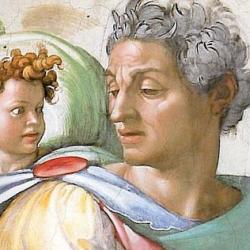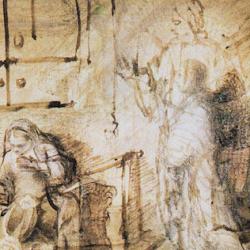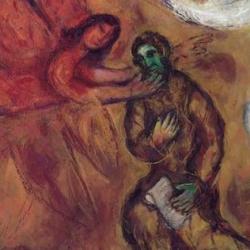Isaiah 7-8 form a unit that is roughly chiastic (the following is modified from David Dorsey):
A. threat from Aram and Israel, 7:1-2
B. Yahweh speaks to Isaiah: message for Ahaz, 7:3-9
C. Yahweh speaks to Ahaz, 7:10-17: sign, Immanuel, king of Assyria
D. “In that day,” 7:18-25
C’. Yahweh says, Tablet and child, 8:1-4
B’. Yahweh spoke, overflowing River, 8:5-10
A’. Yahweh spoke, conspiracy, 8:11-22
This structure has a couple of weaknesses, however.
First, centering the passage on the fourfold “in that day” section seems odd. Though the threat from Assyria is one of Isaiah’s main concerns in the passage, it would make better sense if the repeated references to birth and sonship were highlighted more clearly by the structure. Second, ending the passage at 8:22 misses the connection between 8:22 and 9:1; the latter verse dispels the gloom of the former.
Thus, it seems better to include the opening verses of chapter 9 in the unit. The resulting alternative structure would look like this:
A. threat from Israel and Aram, and message to Ahaz, 7:1-9
B. Yahweh offers sign to Ahaz, 7:10-17
C. “in that day,” 7:18-25
D. Yahweh speaks, tablet and child, 8:1-4
C’. Yahweh speaks, overflowing waters, 8:5-10
B’. Yahweh speaks, conspiracy, 8:11-22
A’. No more gloom, 9:1-7
A number of the subsections in this outline are themselves structured chiastically or in parallel. I list the following without comment before returning to the main structure.
7:1-9
A. threat to Ahaz from Aram and Israel, vv 1-2
B. Yahweh to Isaiah: meet Ahaz, v 3
B’. It will not happen, vv 4-7
A’. Head of Aram and Ephraim, vv 8-9
7:10-17
A. Yahweh spoke: ask sign, vv 10-11
B. Ahaz refuses, v 12
B’. Yahweh rebukes Ahaz, v 13
A’. Yahweh gives a sign anyway, vv 14-17
7:18-25
A. in that day: flies and bees, vv 18-19
A’. in that day: razor, v 20
A”. in that day: keep alive heifer, vv 21-22
A”’. in that day: briars and thorns, vv 23-25
8:1-4
A. Yahweh spoke: write on tablet, v 1
B. witnesses, v 2
A’. approach prophetess, v 3a
B’. Yahweh said: name him, v 3b
C. Assyria, v 4
8:11-22
Yahweh spoke
A. not a conspiracy, no fear, vv 11-12
B. Fear Yahweh, vv 13-15
C. Bind testimony, v 16
D. I wait with children, vv 17-18
C’. don’t consult mediums, but to the law, vv 19-20
B’. curse God, v 21
A’. darkness and gloom, v 22
We can return then to the overall structure of the passage and look at the connections between the corresponding units. A/A’ are linked by references to David (7:2; 9:7). The two sections highlight the contrast between the fearful king Ahaz, a Saullike king, and the later child king who will triumph over His enemies.
B/B’: B speaks of the child Immanuel who will be a sign to Ahaz, while B’ focuses on the children given to Isaiah, who are “signs and wonders in ISrael” (8:18).
C/C’: Both describe the Assyrian invasion, though with different imagery. Both use the phrase “king of Assyria” (7:20; 8:7).
D: The center of the whole passage is the birth of a child to Isaiah and the prophetess, a son whose name speaks of the swiftness of the judgment coming on Aram and Israel, and whose birth is a typological fulfillment of the promise of another, greater birth, the birth of Immanuel, who is also the child-king of chapter 9.










